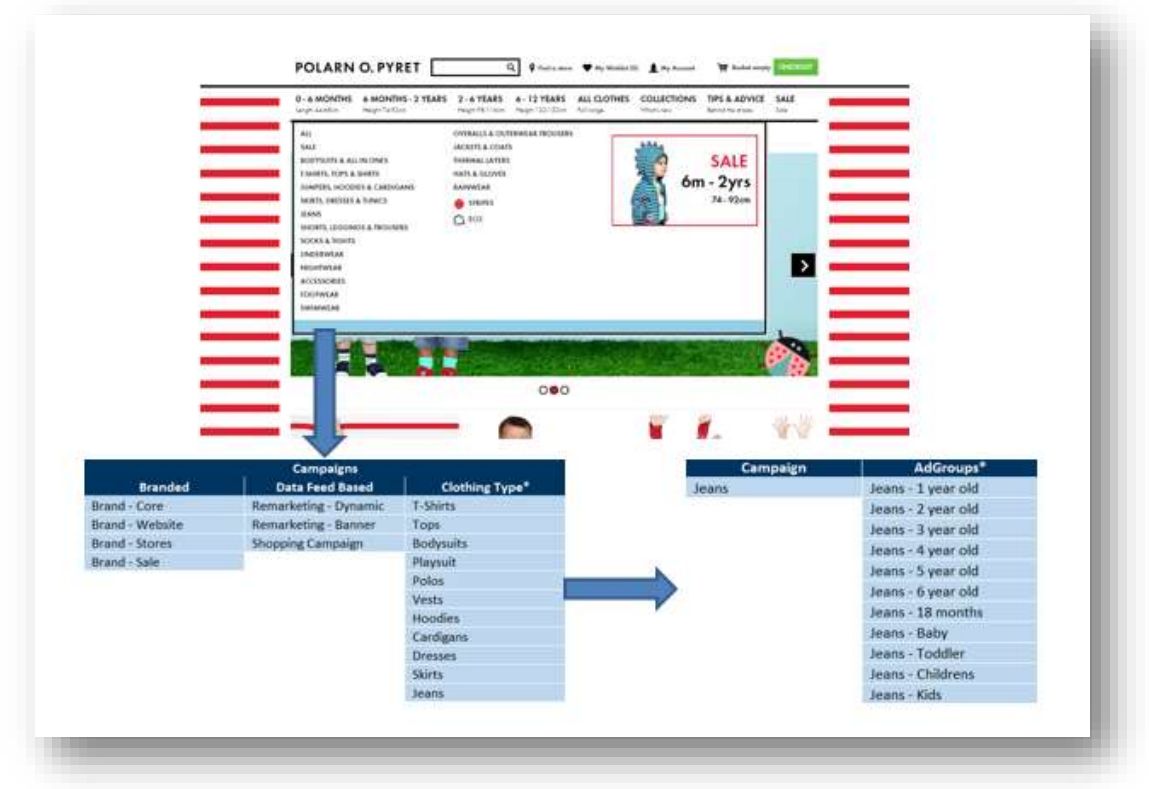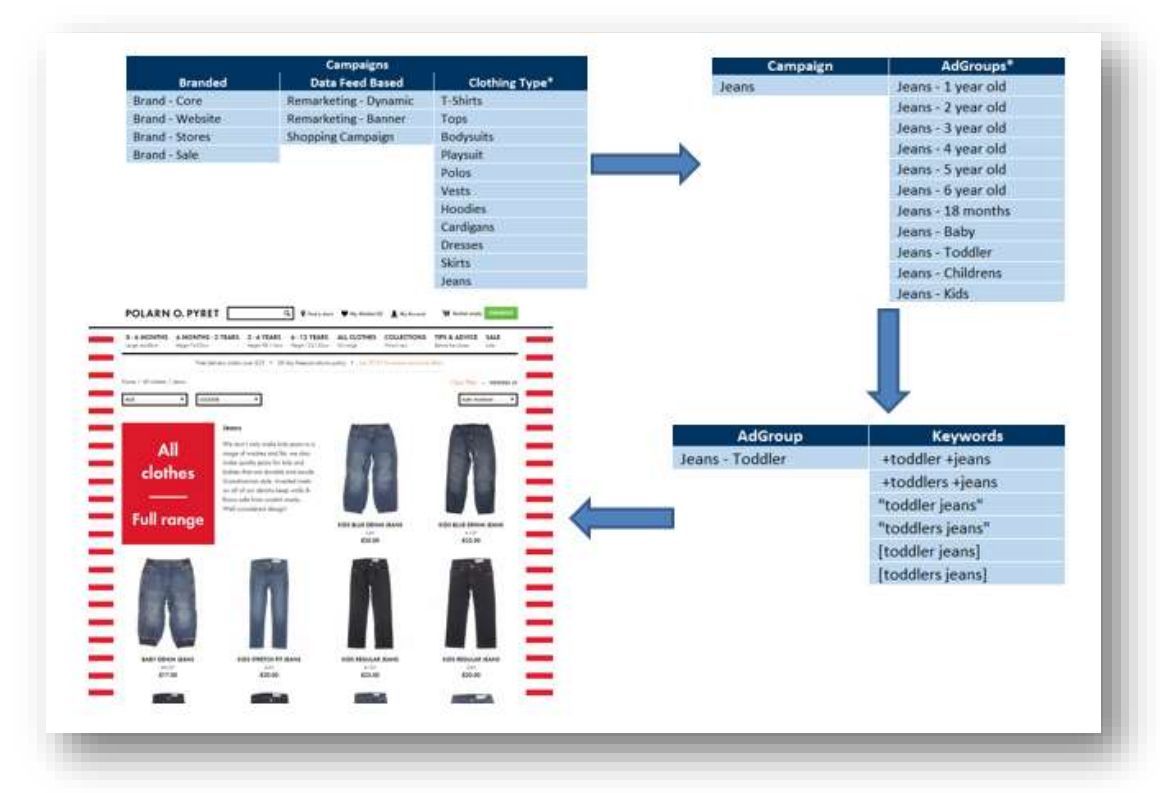Clients in the retail sector can have all sorts of KPIs, but what they all ultimately come down to are revenue growth, ROI and brand awareness. One of the reasons we decided to specialise in retail was that the technology and methodology we have built over many years excels when working towards these objectives.
We start by building an account structure; an approach which allows for tailored ads, flexibility, growth and optimisation at the most granular level.
The importance of a well-structured account is often greatly underestimated. While Google itself released a white paper stating account structure makes no difference to the way it calculates a page’s quality score (QS), the point of good structure is to maximise the relevance between your keywords and your ads – one of the most important parts of QS. A page’s QS determines how much you pay for clicks – and so ultimately how much high-quality traffic you can drive at a low cost.
The importance of account structure
The first question we ask ourselves when taking on a new client is whether we need a new account or not. If the QS of the client’s existing account has been below optimal level for an extended period of time, it may be better to create a brand new account: it can be a lot easier to get great results when starting afresh.
A great starting point when developing a new account structure is to mirror the product catalogue and navigational structure of the website: ad group structure has to be very granular to guarantee highly relevant ads and landing pages, as in the examples below:
Such granular structure allows for accurate bidding and targeting across all devices and territories, as well as ads which are highly relevant to particular keywords.
Keyword matching and relevance
Once the account is structured correctly we turn our focus to the keyword match strategy. There are four different matches: broad, phrase, exact and negative. We believe a successful strategy takes advantage of all four with the use of the broad-match modifier (+).
We see many accounts where the broad-match modifier is used incorrectly, or not used at all. But time spent ensuring the keyword matching strategy is comprehensive, and that all matches are used correctly, is time well spent. Overlook this aspect of PPC and you’re on your way to wasting a whole lot of budget on unqualified traffic.
The importance of driving as much relevant traffic as possible is also important to ensure at this stage. This serves three main purposes:
- Achieving high volumes of traffic and conversions as soon as possible
- Collecting data about what works and what doesn’t work really quickly
- Using these insights to maximise collective profit
Optimise, optimise, optimise
Once we’ve driven enough visits to gain valuable insights into how the traffic we’re driving is performing, it is all about optimisation. Our in-house bidding software kicks in and starts to make bid changes, cutting waste and reinvesting in the most efficient areas of the account.
We’re also able to segment and analyse our audiences, bidding differently according to location, device, day or time and previous behaviour on the client’s website. This ensures we’re using the optimum customised bid for the person searching, rather than bidding a blanket amount for anyone who happens to use a particular search term.
We have seen extraordinary revenue and ROI results with this strategy and, whilst this won’t necessarily work in all sectors, in the retail sector this method has proven worked for us every time.
There are of course many more complexities that need to be taken into consideration to achieve maximum results from a PPC account, but utilising the above techniques is a fantastic starting point to give any retail account the best possible chance of success. We hope this works for you as well as it has for us. Good luck!
Join Luca at Performance Marketing Insights on October 29-30 for a how-to on creating the most successful account structure to cater for advanced optimisation strategies, and everything in between.



